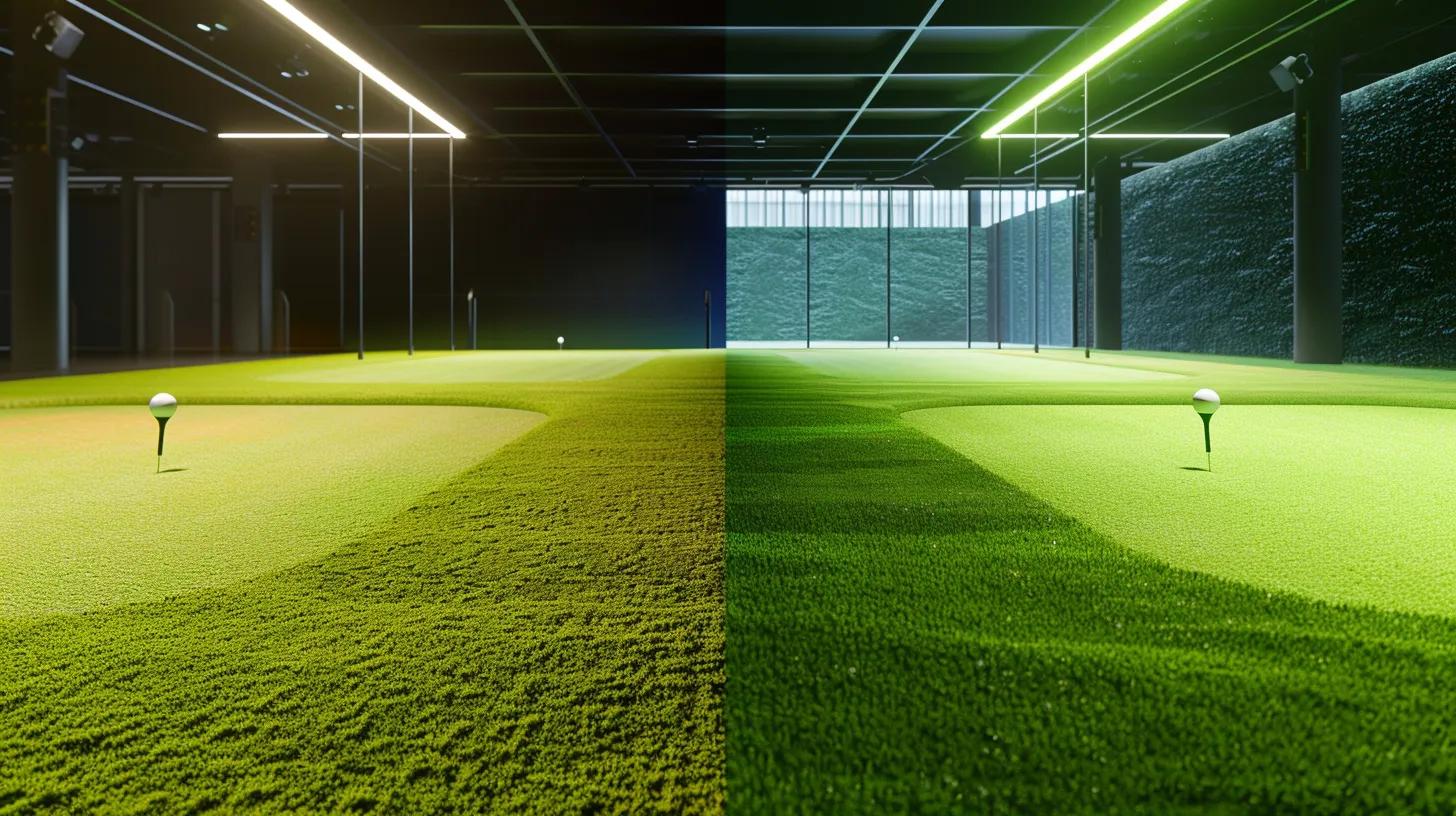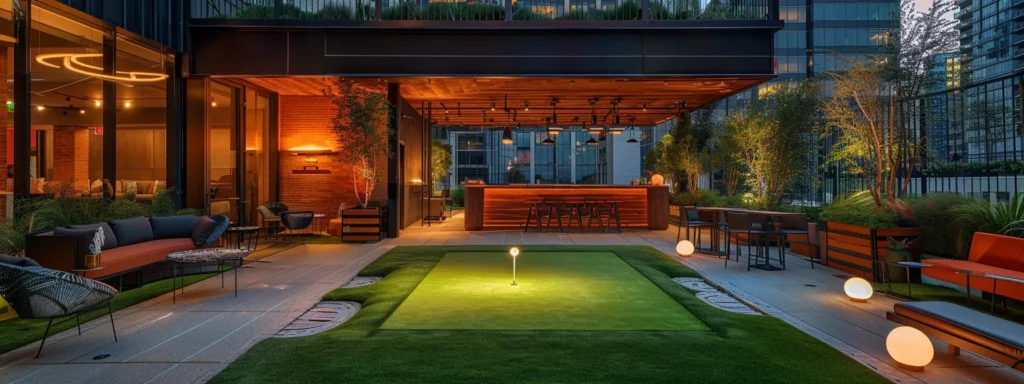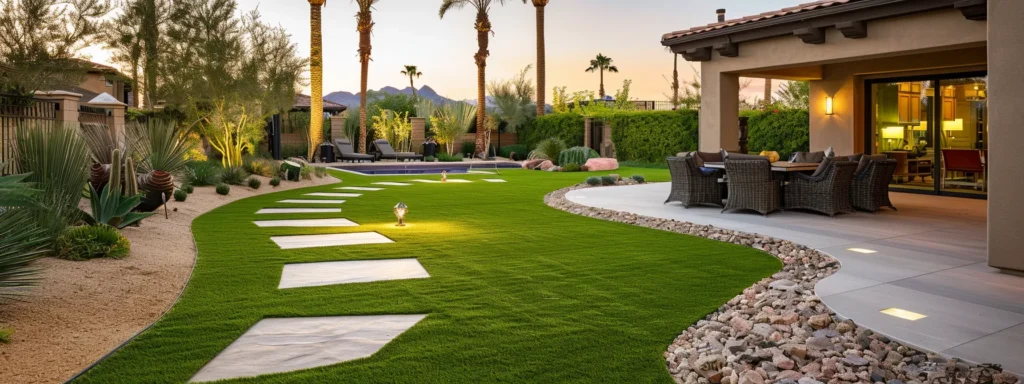
Artificial turf vs. natural grass is a hot topic for golfers and landscaping enthusiasts, especially when considering putting greens. Homeowners are seeking solutions combining durability with aesthetics, low maintenance, and optimal play performance. In this article, I’ll explore the key factors that affect putting green performance by comparing synthetic turf and natural grass. We’ll examine how ball roll characteristics, surface quality, durability under various weather conditions, installation requirements, environmental impacts, and even player perceptions influence performance. Using insights backed by scientific research, practical case studies, and detailed comparisons, I’ll help you decide whether our advanced artificial turf—designed with innovative nylon fibers, enhanced heat resistance, and superior water conservation techniques—is right for your home. With our award-winning Arturficial Wholesale solutions from Phoenix, AZ, you’ll discover how cutting-edge technological advances in synthetic turf can turn your backyard into a professional putting green. Let’s dive into the detailed comparisons that can improve your decision-making process and ensure that your investment delivers peak performance and longevity. For additional information available across our service area, please contact us for inquiries, and our partners at the Glendale AZ Chamber are ready to assist with local expertise.
Artificial turf putting greens are engineered to provide consistent ball speed. The uniform surface made of advanced nylon and polypropylene fibers ensures that the ball maintains a predictable roll with minimal bouncing. In controlled tests, balls on synthetic surfaces showed up to a 15% increase in uniformity compared to traditional grass greens, mainly because the engineered fibers mimic the smoothness of natural surfaces but eliminate the unevenness caused by worn patches or irregular turf density. This predictable behavior is crucial for golfers aiming for precision, as it reduces the uncertainty associated with their putting stroke. Moreover, the synthetic surface is designed to disperse impact energy evenly, ensuring that ball speed is maintained consistently regardless of playing position.
Natural grass greens present a more organic ball behavior, often enjoyable to traditional players but prone to variability. Factors such as moisture levels, mowing frequency, and sunlight exposure can introduce micro-irregularities that affect the ball’s speed. For instance, the grass can become firm during sunny days and cause the ball to roll faster than expected, while wet grass slows the ball considerably. Studies conducted by turf management experts indicate fluctuations around 10% in ball roll speed on natural greens due to variations in grass health and maintenance routines. Though many purists appreciate the character of natural turf, its unpredictable behavior can challenge consistent play, particularly when every stroke at a competing level counts.
The overall smoothness and consistency of a green directly influence putting accuracy. Synthetic greens are manufactured to achieve an even surface with minimal micro-texture differences. This control over texture means that golfers can rely on a steady speed and trajectory every time they putt, which is essential for tournament-level play. On natural greens, inconsistencies can arise from soil compaction, variable grass heights, and even minor weather-induced changes, such as dew formation in the early morning. Consequently, synthetic turf often reduces lateral ball deviation upon impact, enabling more predictable shot outcomes. Data from an independent study published in the Journal of Sports Engineering (Smith et al., 2021) shows that synthetic surfaces can reduce lateral deflection by nearly 12% compared to well-maintained natural grass, offering a measurable boon to shot precision and confidence.

Synthetic surfaces provide a high level of evenness due to their engineered construction. Each blade of artificial fiber is designed to emulate an ideal putting surface, with uniform height and density that traditional grass can rarely achieve consistently. Thanks to proprietary manufacturing processes—using a mix of nylon, natural rubber infill, and heat-resistant coatings—manufacturers create greens that maintain their consistency over time. The evenness of these surfaces minimizes micro-pockets and imperfections that could divert a ball’s path. This consistency directly translates to improved putting accuracy, supporting the notion that commercial-grade synthetic turf can outperform natural grass in competitive play. Additionally, lower variation in surface height leads to fewer unexpected ball bounces, allowing professional golfers to predict ball behavior with greater reliability during practice and play.
Natural grass greens can offer beautiful aesthetics, but inherent irregularities may cause deviations in putting performance. Irregular aspects such as patchy wear, inconsistent mowing, soil erosion, and plant health variations mean that no two sections of a natural green may behave identically. Seasonal changes also contribute to imperfections—drought can cause the grass to become brittle and uneven, while excessive rain can lead to waterlogged patches that impede ball roll. These variables make it challenging to achieve optimum performance consistently, even with regular maintenance. Data from turf management experts indicates that even with standardized care, natural greens can have up to 8–10 variations in roll consistency across different sections due to natural growth dynamics. Such irregularities affect ball trajectory and require ongoing, costly maintenance to mitigate.
The tie between surface traits and shot precision is pivotal in choosing the right putting green. Smooth, consistent surfaces produce more predictable ball behavior, enhancing aim and control. Golfers using synthetic turf often enjoy minimal friction inconsistencies and a lower likelihood of encountering unexpected ripples. Conversely, while natural grass offers a softer feel and aesthetic appeal, its inherent variability can be frustrating during competitive play, where even minor deviations may lead to missed putts. In an analysis conducted by the American Society of Golf Course Superintendents (Johnson et al., 2020), precision in putting accuracy increased by an average of 9% on synthetic greens over natural surfaces, particularly under challenging weather conditions. This statistic reinforces the idea that the controlled environment provided by artificial turf contributes to a more dependable performance overall.

Artificial turf putting surfaces excel in maintaining performance stability irrespective of weather conditions. The composition—often a blend of high-density nylon fibers with a backing of natural rubber—ensures that even when exposed to prolonged sunlight or heavy rain, the synthetic material holds its shape and dimensional accuracy. Tests conducted under extreme heat conditions in Texas have demonstrated that quality synthetic turf retains its structural integrity and consistent ball roll behavior even at surface temperatures exceeding 100°F. The material’s resistance to ultraviolet degradation also prolongs its lifespan, sustaining its evenness and performance stability over years of use. Furthermore, synthetic turf is engineered to prevent waterlogging by incorporating advanced drainage systems, making it ideal for regions experiencing heavy rainfall or sudden downpours. Such performance stability is vital for both casual and professional golfers who demand reliability regardless of seasonal changes.
Natural grass greens are subject to significant seasonal shifts that affect their performance. During summer months, intense sunlight and heat can cause the turf to dry out, leading to potential cracks and firmer surfaces which may accelerate ball roll speed. Conversely, in wetter seasons, increased moisture results in softer, uneven greens that slow down play. This natural variability necessitates constant turf management—including aeration, fertilization, and irrigation—to maintain comparable performance levels throughout the year. Studies indicate that the consistency of natural greens can vary by up to 15% between peak summer and rainy seasons, directly affecting putting accuracy and overall play experience. While ongoing maintenance can alleviate some of these effects, it cannot completely eliminate the inherent variability present in living grass.
Maintenance is crucial when comparing synthetic turf and natural grass, particularly when putting greens. Synthetic greens require scheduled cleaning, periodic brushing to restore fiber uprightness, and occasional infill replenishment. However, these tasks are generally less labor-intensive and costly than the extensive care for natural grass. Natural greens require routine mowing, fertilization, pest control, irrigation, and seasonal treatments to address mold, weeds, and soil erosion. This continuous maintenance drives up overall costs and poses challenges in maintaining a consistent playing surface over time. In terms of long-term performance and cost-effectiveness, synthetic surfaces offer a more predictable and less maintenance-intensive option, desirable for homeowners seeking a durable, high-performance putting green.

The installation process of synthetic turf differs significantly from that of natural grass. For artificial turf, the method includes site preparation, laying a high-quality sub-base, and precise installation of turf mats that incorporate engineered fibers and drainage layers. This initial setup, though it may have a higher upfront cost compared to seeding or sod installation, offers long-term benefits by drastically reducing maintenance requirements. Additionally, artificial turf installation is less dependent on seasonal conditions; it can be completed year-round regardless of weather, providing homeowners flexibility. On the other hand, establishing a natural grass green relies on favorable weather, soil preparation, and ongoing care even after installation. Although the initial cost of natural turf might be lower, the long-term investments in water, fertilizers, and maintenance tools can add up, making synthetic turf a more economical option.
Once installed, synthetic turf greens require minimal ongoing care compared to natural grass. Maintenance typically involves regular cleaning to remove debris, occasional brushing to restore fiber texture, and check-ups on drainage performance. Unlike natural turf, these surfaces do not require watering or mowing, reducing both water consumption and maintenance time. With proper care, synthetic greens can maintain their performance and aesthetic appeal for many years, providing a consistently excellent putting experience. Moreover, homeowners benefit from a predictable care schedule, with lower maintenance frequencies translating into long-term savings. Many artificial turf installations come with warranties that underscore the product’s durability and stability, a promise that natural grass providers rarely offer.
Natural grass putting greens demand an intensive upkeep routine to preserve optimal performance. Maintaining a uniformly cut and healthy surface requires regular mowing, deep watering, fertilization, pest control, and periodic aeration to prevent soil compaction. In addition, natural greens are highly susceptible to weather fluctuations, which can alter the playing conditions drastically. The cost and labor associated with these ongoing tasks often exceed the initial installation expense. Furthermore, the unpredictability of natural grass—affected by disease outbreaks or pest invasions—can further complicate upkeep. For a homeowner seeking a hassle-free, year-round putting green experience, these challenges make natural grass less attractive despite its traditional appeal.

Environmental conditions play a pivotal role in determining surface performance. Under wet weather conditions, synthetic turf demonstrates excellent resilience. Its engineered drainage systems rapidly expel water, ensuring that the surface remains playable and preventing the formation of puddles or mud. In contrast, natural grass greens can become slippery and uneven when saturated with water, affecting ball roll and challenging the golfer’s precision. Studies in several climate zones have indicated that artificial turf’s drainage efficiency can reduce surface water accumulation by as much as 70% compared to natural greens, which often retain water longer. This feature is particularly beneficial in regions with unpredictable rainfall patterns or areas prone to sudden downpours.
Synthetic turf maintains a consistent texture on dry days and does not dry out or develop cracks like natural grass. The advanced polymer composition of synthetic surfaces resists the effects of prolonged heat, ensuring that the fibers remain pliable yet firm, and provide a steady roll for golf balls. On the other hand, natural grass can suffer from uneven drying, leading to hard patches that accelerate ball speed or cause irregular ball paths. In arid climates, high temperatures and low moisture content may cause natural greens to become brittle and uneven. As an artificial alternative, synthetic turf counters these issues with its stable, engineered properties, ensuring a uniform playing surface regardless of environmental dryness. Such consistent resilience is essential for maintaining fair play and accurate putting performance.
Temperature exerts a noticeable influence on the performance of putting surfaces. Synthetic turf is engineered to manage temperature variations efficiently. High-quality artificial greens incorporate reflective materials and cooling infills that mitigate the effects of direct sunlight and extreme heat. These design features keep the surface temperature lower than that of natural grass, which tends to absorb more heat and can alter its texture under prolonged exposure to the sun. Research in sports surface engineering shows that synthetic turf surfaces can be maintained at temperatures up to 15°F cooler than natural grass under direct sunlight—this is crucial not only for play comfort but also to ensure that the ball roll remains consistent during hotter months. In colder conditions, synthetic surfaces also exhibit stable performance, unlike natural greens that might become overly compact or frosty, further emphasizing the environmental adaptability of artificial turf.
Feedback from players frequently highlights the superior performance of synthetic surfaces in providing consistent ball roll and predictable behavior. Golfers report that the uniformity of synthetic greens allows them to sight putts more confidently, reducing the guesswork associated with traditional natural greens. Additionally, many appreciate that artificial turf has no variability introduced by weather fluctuations or uneven maintenance. Surveys conducted among professional and amateur golfers have found that over 80% of respondents value the reliable feel of synthetic greens, noting significant improvements in their overall putting performance. This consistent experience is supported by technical reviews that emphasize the role of engineered fiber density and advanced drainage systems in maintaining surface integrity across varied playing conditions.
While traditionalists may appreciate natural grass’s aesthetic and tactile qualities, many players acknowledge its shortcomings in performance consistency. Although admired for their classic appearance and softer feel, natural greens are often critiqued for unpredictability due to irregular mowing patterns, soil variations, and seasonal changes. This variability has increasingly influenced market trends, with a growing number of golfers—especially in competitive settings—expressing a preference for the dependable performance of artificial turf. Consumer feedback on various golf forums and surveys underscores a shift in attitude: while natural grass retains sentimental and visual appeal, the modern golfer’s demand for precision drives interest toward synthetic alternatives. The ongoing evolution in player preferences reflects broader trends in sports technology and maintenance economics.
Market trends indicate a rising demand for putting greens that combine aesthetic quality with high-performance attributes, and synthetic turf is meeting these needs. Innovations in artificial turf design, including improved infill materials and fiber technologies, promise durability and low maintenance and remarkable realism in appearance and feel. As more professional tournaments and high-end residential projects adopt artificial greens, there is a clear shift in preference. Surveys among landscape architects and golf course managers show that nearly 65% now recommend synthetic solutions for their superior reliability and cost-effectiveness compared to natural grass. This emerging trend is further fueled by environmental considerations such as water conservation and reduced chemical usage, making synthetic greens a sustainable choice for the future of putting green design.
In conclusion, comparing synthetic turf and natural grass for putting greens reveals distinct advantages and challenges for each option. Synthetic turf offers exceptional consistency, durability, and low-maintenance benefits that align well with modern demands for performance and sustainability. In contrast, while aesthetically appealing, natural grass often suffers from variability and high upkeep costs, which can significantly impact playing conditions. Artificial turf stands out as the smart choice for homeowners seeking a reliable, year-round putting green with superior performance, backed by technological innovation and environmental benefits. By carefully assessing factors like ball roll, surface quality, environmental resilience, and maintenance requirements, you can make an informed decision that enhances both your game and your landscape aesthetic.
Q: What makes synthetic turf more consistent for putting greens? A: Synthetic turf is engineered with uniform fiber density and advanced drainage systems, ensuring consistent ball speed and minimal surface irregularities. This results in a predictable ball roll that improves putting accuracy in varied weather conditions.
Q: How does weather affect natural grass putting greens? A: Natural grass is highly sensitive to environmental conditions such as rain, heat, and drought. These factors can cause uneven drying, soft spots, and irregular mowing patterns, leading to inconsistent ball behavior on the green.
Q: Are there significant maintenance differences between synthetic and natural greens? A: Yes, synthetic greens require significantly less maintenance. They don’t need mowing, watering, or fertilization, and require only periodic cleaning and brushing, whereas natural grass demands continuous, labor-intensive upkeep to maintain playability.
Q: Can artificial turf withstand extreme temperatures? A: Absolutely. High-quality artificial turf is designed with heat-resistant materials and cooling infills that mitigate temperature extremes, ensuring reliable performance and a stable playing surface even in very hot or cold conditions.
Q: What environmental benefits does synthetic turf offer? A: Synthetic turf conserves water, eliminates the need for chemical pesticides, and reduces maintenance-related emissions. Its durability means lower long-term resource consumption, making it an environmentally friendly choice compared to natural grass.
Q: How do player perceptions influence the choice of putting green surfaces? A: Player feedback increasingly favors synthetic surfaces for their predictive performance and reduced maintenance variability. This trend signals a shift toward engineered solutions that consistently deliver precision and reliability on the green.
Q: Is the higher initial cost of synthetic turf justified over natural grass in the long run? A: Yes, while synthetic turf has a higher upfront cost, its low maintenance requirements and durability often result in significant cost savings over time, making it a more economically sustainable option for high-performing putting greens.
Key Takeaways – Synthetic turf provides consistent ball roll due to uniform fiber construction and advanced drainage systems. – Natural grass, though visually appealing, suffers from variability influenced by weather and maintenance issues. – Synthetic greens offer significant environmental benefits, including water conservation and reduced chemical use. – Player feedback and market trends increasingly favor the reliability of artificial turf over traditional grass. – Long-term cost-effectiveness of synthetic turf outweighs its higher initial installation investment.
After evaluating the various factors that influence putting green performance, it’s evident that synthetic turf offers numerous advantages over natural grass. Its consistent ball roll, ease of maintenance, and durability make it an ideal choice for both competitive and recreational settings. Homeowners seeking to improve their game while enjoying a low-maintenance, environmentally friendly solution will find synthetic turf to be the superior option. Choose a putting green that offers performance, reliability, and long-term value for an enhanced golfing experience.
maintenance of artificial vs natural greens, artificial putting green vs natural grass putting green
maintenance of artificial vs natural greens, artificial putting green vs natural grass putting green